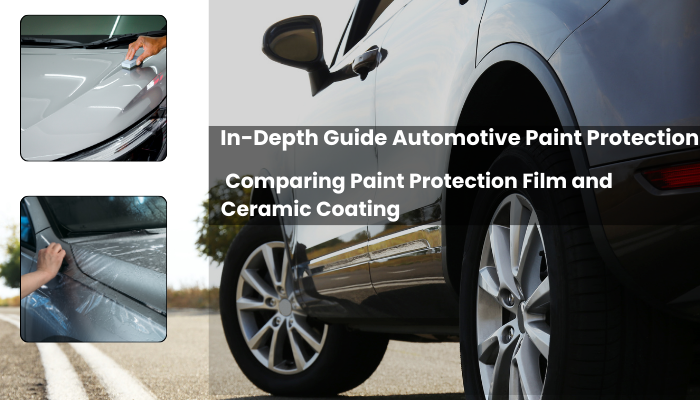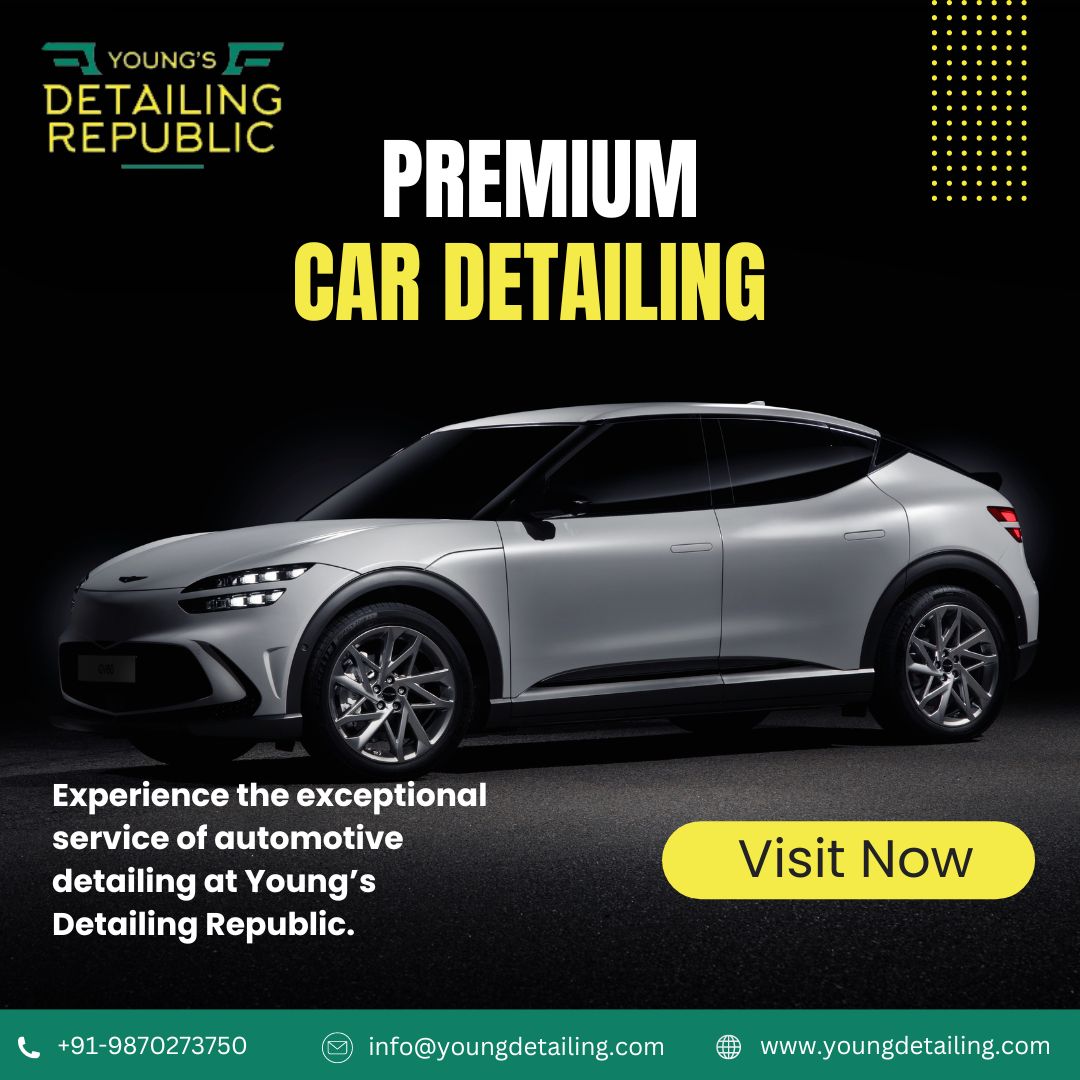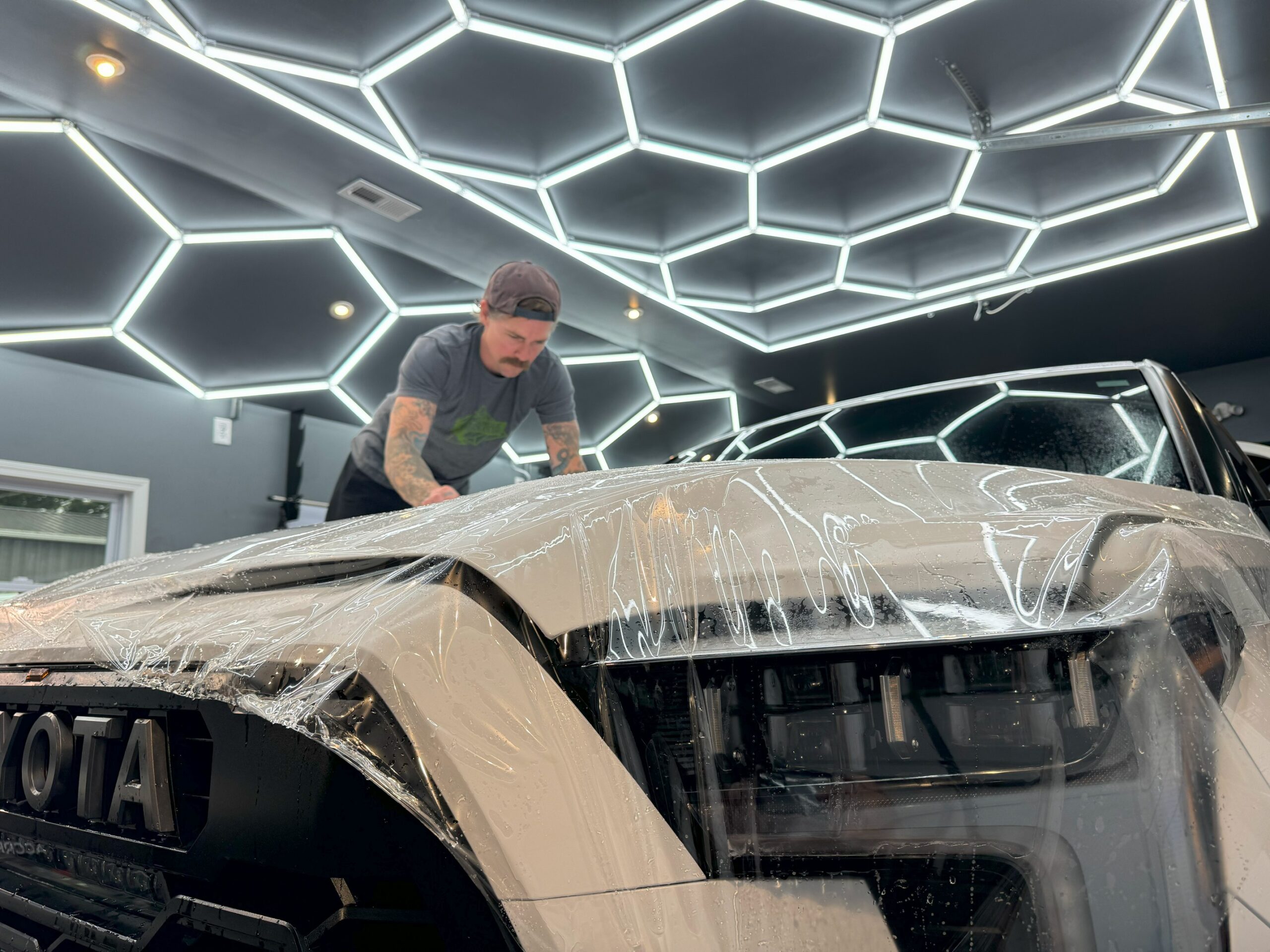In-Depth Guide Automotive Paint Protection: Comparing Paint Protection Film and Ceramic Coating

Maintaining the pristine appearance of your car’s paint is a top priority for many vehicle owners. However, the elements can take a toll on your vehicle’s finish, leading to scratches, chips, fading, and other forms of damage. Fortunately, there are two popular solutions to protect your car’s paint: paint protection film (PPF) and ceramic coating.
In this comprehensive guide, we’ll explore the benefits, differences, and considerations of these two automotive paint protection options, empowering you to make an informed decision for your vehicle.
Benefits of Paint Protection Film (PPF)
Paint protection film, also known as clear bra, is a transparent, high-performance urethane film that is applied to the vulnerable areas of your car’s exterior.
Here are some of the key benefits of using PPF
-
Scratch and Chip Protection: PPF acts as a durable shield, shielding your car’s paint from stone chips, road debris, and minor scratches, preserving the original finish.
-
Gloss and Clarity: High-quality PPF products are designed to maintain the glossy, clear appearance of your car’s paint, without compromising the visual aesthetics.
-
Self-Healing Properties: Many PPF products have the ability to “self-heal” minor scratches and swirl marks, restoring the film’s smooth, flawless appearance.
-
Durability: PPF is engineered to withstand the elements, including UV rays, weathering, and chemical exposure, ensuring long-lasting protection.
-
Customizable Coverage: PPF can be applied to specific areas of your car, such as the front bumper, hood, and mirrors, or as a full-body wrap for comprehensive protection.
Understanding the Legal Regulations for Paint Protection Film
Before installing paint protection film, it’s crucial to familiarize yourself with the legal regulations in your area. Some jurisdictions have specific guidelines or restrictions regarding the use of PPF, particularly on the front windshield and side windows.
Be sure to research and comply with all applicable laws and regulations to avoid any legal issues.
Step 1: Preparing Your Car for Paint Protection Film Installation
Proper preparation is key to ensuring a successful and long-lasting PPF installation. This involves thoroughly cleaning and decontaminating the car’s surface, removing any existing wax or sealants, and ensuring the paint is in good condition.
A professional installer will typically handle this process, but it’s important to understand the importance of this step.
Step 2: Selecting the Right Paint Protection Film
When choosing a PPF product, consider factors such as thickness, clarity, self-healing properties, and the manufacturer’s reputation. Higher-quality PPF films may have a higher upfront cost, but they often provide superior protection and a longer lifespan.
It’s also important to select a PPF that is compatible with your car’s make, model, and color.
Step 3: Installing the Paint Protection Film
The installation process for PPF requires skill and attention to detail. Professional installers use specialized tools and techniques to ensure the film is applied seamlessly, without any air bubbles or wrinkles.
They will also carefully trim and contour the film to fit the specific areas of your car, ensuring a perfect fit.
Common Mistakes to Avoid During Paint Protection Film Installation
Improper installation can lead to a range of issues, such as visible edges, air bubbles, and premature peeling or lifting of the film.
It’s crucial to work with a reputable and experienced PPF installer to avoid these common pitfalls.
Maintaining and Caring for Your Paint Protection Film
Proper maintenance and care are essential to keeping your PPF in top condition. This includes regular cleaning, using approved cleaning products, and avoiding abrasive materials or harsh chemicals.
Periodic inspections by a professional can also help identify and address any issues before they become more serious.
Understanding Ceramic Coating
Ceramic coating is another popular automotive paint protection solution that offers a different approach compared to PPF. Ceramic coatings are liquid polymer sealants that are applied directly to the car’s paint, creating a durable, hydrophobic layer that protects against various forms of damage.
Benefits of Ceramic Coating
-
Surface Protection: Ceramic coatings form a protective barrier that shields the paint from scratches, swirl marks, UV damage, and environmental contaminants.
-
Enhanced Gloss and Hydrophobicity: Ceramic coatings impart a deep, glossy finish and a high degree of water repellency, making the car easier to clean and maintain.
-
Durability: Well-applied ceramic coatings can last for several years, providing long-lasting protection for your car’s paint.
-
Easy Maintenance: The hydrophobic properties of ceramic coatings make it easier to remove dirt, grime, and other contaminants, reducing the frequency of washing.
-
Customizable Thickness: Ceramic coatings can be applied in varying thicknesses to suit your specific needs and preferences.
Comparing Paint Protection Film and Ceramic Coating
Both PPF and ceramic coating offer effective solutions for protecting your car’s paint, but they differ in their approach and characteristics. Here’s a side-by-side comparison:
Read this Article Also – Is a Paint Correction Worth it?
Choosing Between Paint Protection Film and Ceramic Coating
When deciding between PPF and ceramic coating, consider your specific needs, budget, and personal preferences. If you’re primarily concerned with protecting your car’s paint from physical damage, such as stone chips and scratches, PPF may be the better choice. On the other hand, if you’re focused on enhancing the car’s appearance and reducing maintenance, a high-quality ceramic coating may be the way to go.
To learn more about the best paint protection solution for your vehicle, schedule a consultation with a trusted automotive detailing specialist in your area. They can assess your car’s condition, discuss your needs, and provide personalized recommendations to ensure your car’s paint stays looking its best for years to come.
To Wrap up
Protecting your car’s paint is an essential step in preserving its value and appearance. Both paint protection film and ceramic coating offer effective solutions, each with its own unique benefits and considerations. By understanding the differences between these two options, you can make an informed decision that aligns with your specific needs and preferences, ensuring your vehicle maintains its showroom-fresh look for years to come.
Read More Articles You Can Explore this website – websarticle.com



